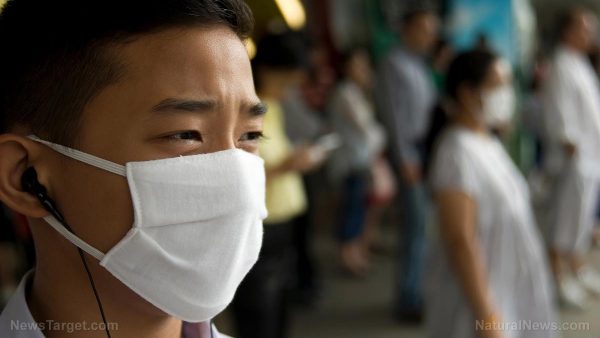Study: Face masks available in China may be ineffective in protecting consumers from air pollution
06/15/2018 / By Carol Anderson

China has experienced an unprecedented growth in the last century. However, with the country’s gains in industrialization comes its undeniable pollution. As the first red alert in Beijing came into effect, schools closed down, and construction projects were halted. For some time, dealing with smog has become a norm for China’s capital.
As part of a research conducted by senior study author Miranda Loh and her team from the Institute of Occupational Medicine, an assessment of some masks used by Beijing citizens was done since its citizens were among those who suffered the consequences of air pollution. Moreover, 1.6 million premature deaths are reported in China yearly.
As per the published report on Occupational & Environmental Medicine, the researchers bought nine different masks that claimed to protect people against fine particle pollution, also known as PM2.5.
Using a filtration efficiency test, they tested how much particulate matter and black carbon concentrations are found in the masks after exposing them to airborne diesel for 30 minutes. Four out of nine masks were tested while volunteers were either talking, sitting, standing, bending over and walking in place.
The team found that average particle and black carbon concentration ranged from 0.26 to 29 percent, while the average leakage on the volunteers, who were sedentary, ranged from three percent to 68. On the other hand, those who were doing an active task were ranged from seven to 66 percent.
Loh said, “Even if the filtration efficiency of the mask is high, and the mask fits the person initially, the mask may not continue to give a good fit as the person goes about their daily activities – walking, talking, and more.”
The power of the elements: Discover Colloidal Silver Mouthwash with quality, natural ingredients like Sangre de Drago sap, black walnut hulls, menthol crystals and more. Zero artificial sweeteners, colors or alcohol. Learn more at the Health Ranger Store and help support this news site.
“It is important for people to understand that not all masks are effective at reducing exposure to particles in air pollution,” Loh said. “And none of these masks reduced the concentration of pollution gases such as nitrogen dioxide.” (Related: Air pollution is so bad in China, it’s turning women’s’ facial skin BLACK.)
Due to the situation, companies are quick to cash in on the pollution-driven consumption of face mask. A weekly jump of 173% sales in face masks has trended since the extreme pollution levels in December 2013. Chinese people have already spent 870 million yuan to shop on Taobao. But the question remains: Are the masks working as effective protection from pollution?
It has become a mass behavior for people in China to assume that wearing face masks are useful, according to Wong Chit Ming, a researcher at the Public Health Department of Hong Kong University. He added, “[By wearing a mask] you may feel a little better. But there’s no real evidence they help.”
Meanwhile, as per Richard Saint Cyr, doctor, and director of communication at the United Family Healthcare in Beijing, some face masks can decrease exposure to harmful particles in the air that is small enough to enter bloodstreams.
According to reports, the majority of China’s citizen use cheap cotton masks that give little protection and filter. Manufacturers market their product as effective but no national standard nor regulatory body can provide an evaluation of their claims. Two studies from China concluded that wearing an N95 facemask shows reduced short-term exposure effects on the heart and blood vessels of urban air pollution.
In response, China’s government introduced a legislation to drastically reduce coal-fired heating in Beijing and 27 other major cities to address the problem; however, due to the severity of the situation, residents now live their lives behind pollution masks.
A number of studies surmise that respiratory style mask is not fit for Chinese faces. They concluded that the filtering facepiece respirators (FFRs) marketed and used widely in China does not meet the fit factor. It was suggested that FFRs should improve facial dimensions that fit marketed wearers, in this case in China. Fit-testing can improve the effectiveness of respirators and increase the protection they claim.
Learn more about pollution and how it affects us at Pollution.news today.
Sources include:
Tagged Under: China, environment, face mask, health risks, particulate matter, research, respirators, science




















